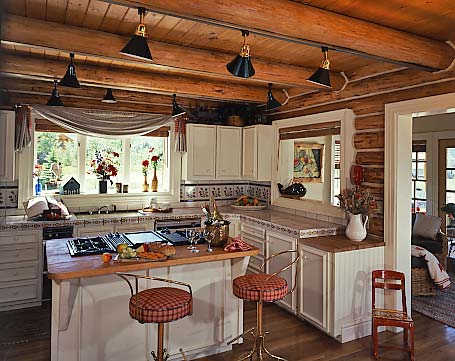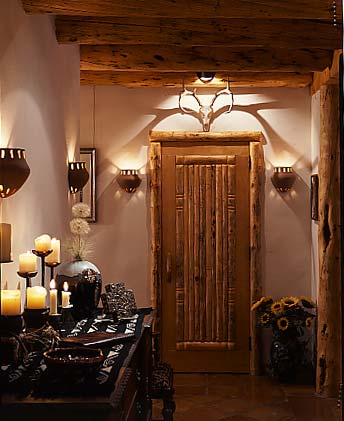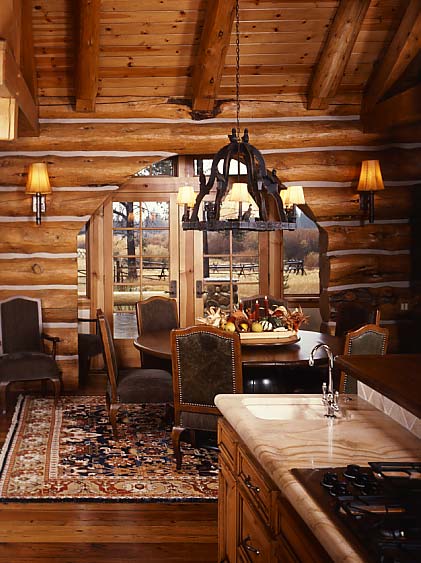To counteract the darkness, add a variety of fixtures to your home, recommends Rob Colgan, executive director of marketing for the National Electrical Contractors Association and chairman of the National Lighting Bureau. “You want a reasonable amount of ambient lighting, as well as task lighting based on what you’ll be doing in each particular area, such as lamps for reading or fluorescents for chopping vegetables in the kitchen.” As you’re planning your log home’s lighting scheme, consider the following:
Stay On Track | Use Track Lighting:

Highlight different aspects of a room by installing track lighting or rail systems on walls, ceilings or exposed beams. “A little directional lighting creates interest,” Rob says, “and it really shows off the walls.”
Rail systems are more versatile than track lighting. Rails can bend around corners, and they’re available in wavy lines and geometric shapes. “Several manufacturers make them with a warm bronze finish, which looks amazing in log homes,” says Katie.
Look Up | Incorporate "Uplighting":

To increase ambient light in a room, use uplighting. “If you have a low, light-colored ceiling, bounce light off of it with standing floor lamps, such as torcheres,” suggests Rob.
To brighten cathedral ceilings, add uplights at the nine-foot level, which Rob says will keep the light from getting lost in the rafters and showcase the log trusses in the process.
Bounce Off the Walls | Add Light Fixtures to Your Walls:

Fixtures attached to walls can add soft lighting, according to Rob, who suggests wall washers that highlight art.
“They make the entire room glow,” he says. Or try wall sconces. “In a log home, especially one with cathedral ceilings, sconces bring the light down to the human level,” advises Katie. An added benefit: Side lighting flatters the face; overhead light can cast unattractive shadows.
Increase Diversity | Combine Methods for Maximum Results:

Don’t rely on one ceiling fixture for the whole room’s illumination; downlighting from one central location creates glare. “The trend today is moving away from overhead lighting,” says Rob. Instead, include several light sources in each room, and spread them out to create three or four layers of light. A chandelier, task lamps and some kind of accent lights should do the trick, according to Katie. Three watts per square foot should sufficiently illuminate a room.




_11868_2023-04-18_10-31.jpg?width=256&height=288&quality=70)






